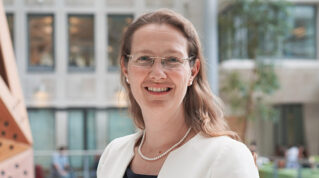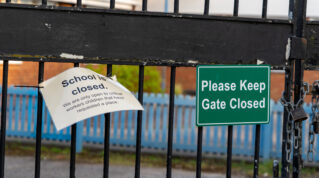Primary school pupils demonstrated “notable catch-up” by the summer term of this year, but disadvantaged secondary pupils are still well behind their peers in reading, according to a government-commissioned study.
The Department for Education has today released the latest report from its research project assessing the learning loss experienced by pupils during Covid-19. The project is run by Renaissance Learning and the Education Policy Institute (EPI).
The report concluded that periods of partial school closure “created and exacerbated
learning losses in both reading and mathematics”.
These were “partially counterbalanced” by periods where schools fully re-opened for in-person learning, but certain characteristic groups and pupils in different regions of England experienced “greater learning losses”.
1. ‘Notable catch-up’ for primary pupils…
The study found by the summer term there was “notable catch-up” for primary-aged pupils in reading.
The average learning loss for this cohort improved by around 1.3 months on the 2.2 month gap found in the spring, resulting in average learning loss of around 0.9 months by the summer term.
However, secondary pupils had “only caught up slightly” by the summer, with the gap closing from 1.5 months to 1.2.
In maths, there was also “notable” catch-up for primary pupils by the summer, with the average gap closing from 3.4 months in the spring to 2.2 months.
Limited sample sizes meant robust estimates could not be determined for secondary maths.

2. …but poorer secondary pupils 1.6 months further behind in reading
The study found that pupils from disadvantaged backgrounds experienced greater learning losses than their more affluent peers.
By the summer term, the estimated gap in learning loss in reading between disadvantaged pupils and their better-off peers was around 0.4 months for primary pupils and 1.6 months for secondary.
In secondary reading, pupils eligible for free school meals were 2.4 months behind by the summer term, compared to just 0.8 months for non-free school meals pupils.
In primary reading, free school meals pupils were 1.2 months behind their usual progress, compared to 0.8 months for those not eligible.
In primary maths, free school meals pupils were 2.6 months behind by summer, compared to 2.1 months for non-free school meals pupils.
3. Half of maths disadvantage gap progress undone
Earlier reports released in the summer warned that the lost learning for disadvantaged pupils in the first half of the autumn term was “equivalent to undoing between a third and two-thirds of the progress made in the last decade in closing the disadvantage gap in primary schools”.
The latest report updates that prediction with more detail, stating that in reading, the extent to which disadvantaged pupils lost learning by the summer term “appears to be equivalent to undoing a third of the progress made in the last decade on closing the gap in primary schools”.
In maths, the difference in progress lost relative to other pupils by the summer term “would be equivalent to undoing around a half of the progress made over the past decade in closing the disadvantage gap in primary schools”.
4. Study shows regional variations
There were also variations in learning loss across different regions of England.
For example, in primary reading, learning loss ranged from 0.2 months in London by the summer term to 1.7 in the West Midlands and 1.4 in the north west.
In secondary reading, by the summer term, pupils were again 0.2 months behind in London, compared to 2.9 months in Yorkshire and the Humber.
5. SEND pupils and children in need are further behind
The study also found that pupils with special educational needs and disabilities (SEND) and children in need were further behind their peers.
Pupils with SEND were, by the summer term, 1.6 months further behind non-SEND pupils in reading at secondary level, and 0.1 months further behind at primary.
Children in need were around 1.5 months further behind their peers in secondary reading, and 0.3 months further behind in primary.
6. Correlation between absence and learning loss
The study also found a correlation between pupil absence and levels of learning loss in the autumn and spring terms.
In the second half of the autumn term last year, pupils in schools with high levels of absence had lost around 2.4 months of progress in secondary reading and 1.6 months at primary, compared to 1.1 months and 0.5 months respectively in schools with low levels.
In primary maths, those in schools with high levels of absence had lost around 3.8 months, compared with 2.1 months for those with low levels.
By the spring, learning loss in schools with high levels of absence was 3.2 months for primary reading, compared to two months in low-level absence schools. However, at secondary level, learning loss in reading was the same as for high and low-absence schools, at 2.4 months.
Learning loss in primary maths in the spring term was 4.7 months in schools with high levels of absence, compared to 3.2 months in those with low levels.














Your thoughts